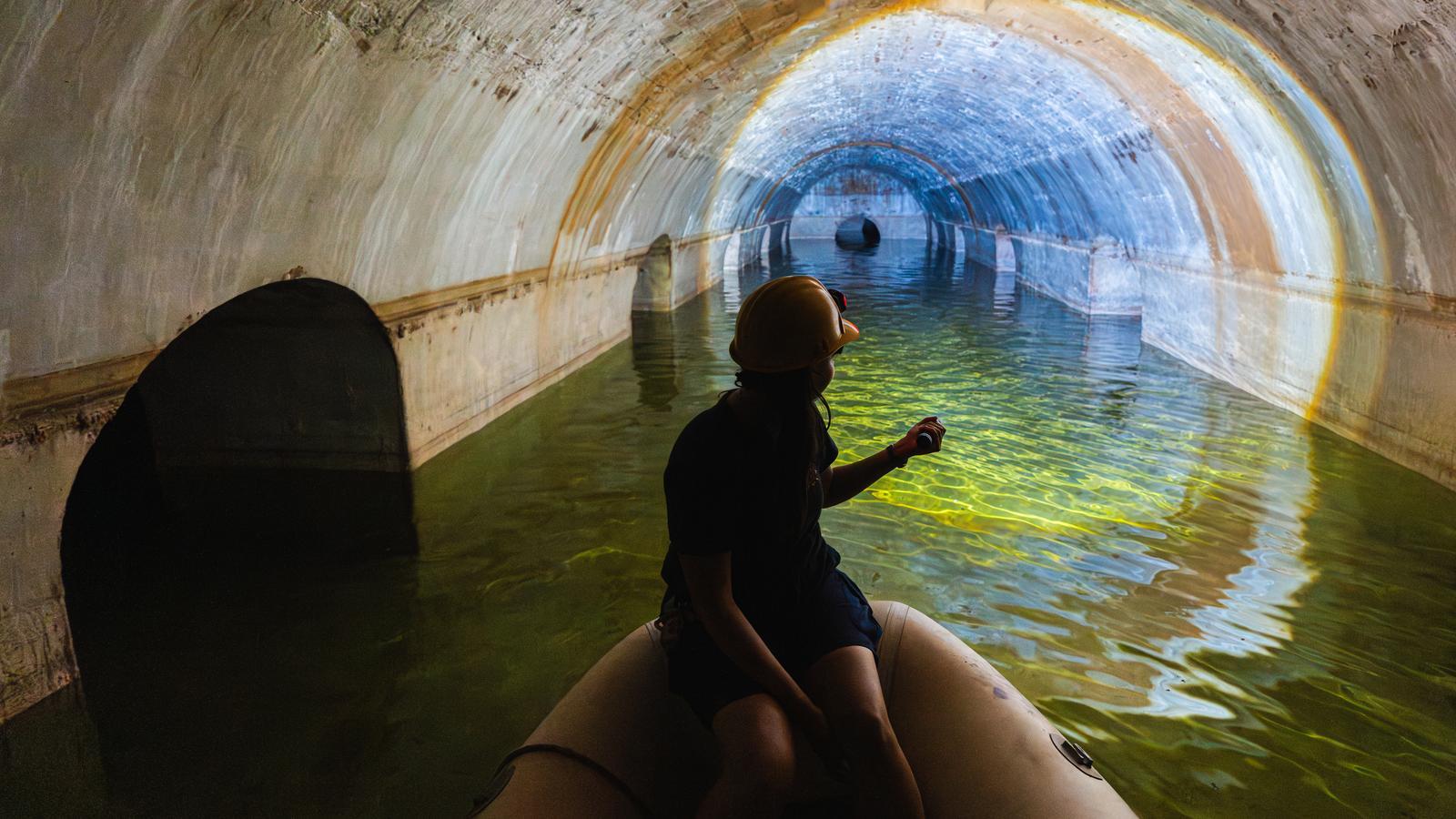It's an immense fortress. Has it ever been impregnable? No. Napoleon's army managed to get in. I'm in the Sant Ferran Castle in Figueres, which throughout history has welcomed people as diverse as Salvador Dalí –as a recruit– and Antonio Tejero –the architect of the 23-F– as a prisoner.
It's stiflingly hot today at Sant Ferran Castle, located on a hill, as befits any castle. So far, I don't see any water anywhere. The sea is quite far away. With a group of ten people, I board a jeep that will tour the moat. If we visited on foot, we'd only see a tiny part. At least this way, we see a tiny part. There isn't a drop of water, nor has there ever been, in the moat. Not even in the place where the soldiers lived (they slept in heated beds: three soldiers in the same bed, sharing the space 24 hours a day). They didn't shower once a week or once a month... They never showered.
But there is water, and millions of liters of it. As in every castle, drinking water was a fundamental element for withstanding a siege. Here, a reservoir located beneath the large parade ground is kept full. surrounded by a group of buildings where the officers lived. Four wells—one at each corner—are the only clue that there is water beneath the parade ground.
The water is the icing on the cake. We'd already turned around in the jeep—and gotten completely disoriented. We only got out of the vehicle once, to enter a countermine. It was so cool!
A rather narrow staircase finally leads us to my destination for today: what they call the Water Cathedral. This tank is estimated to hold about 8 million liters of water. We form two groups of four to navigate the cistern. Two older—and enthusiastic—people have decided against sailing after the guide told us we'd need to huddle tightly in the boat and lower our heads quite far at some points.
First we climbed up a fairly long, completely vertical aluminum ladder, like those used in swimming pools. Cristina, our guide, invites Let's take off our shoes. It's a precautionary measure to prevent the rubber boat from getting punctured. And then we put on our helmets.
We navigate through one of the four cisterns that make up the large reservoir. They are separated. If one becomes contaminated, the others are preserved. Cristina moves the boat forward with great skill. She manages to make sure the oar doesn't splash us even a drop. It's not easy to steer a small boat with only one oar, like the gondolier Venetians. "The hardest thing is keeping the oar on the side of the boat, so you don't lift it and get in your way," he tells us as I put a hand in the water: it's very cool. "And where did the water come from?" I ask. "From a spring in the town of Llers. It came through an aqueduct. You pass under that aqueduct when you're driving on the AP-7. Right where the cars pass is a modern canal, but next to it you can see the arches very clearly. With a car, you go by so quickly that many don't even notice." He's been doing it for years. So, this water from the castle cistern has been stored for years and years... And it looks so clean!
As we pass under a vent, Cristina looks up to point out that it's covered. No rays of sunlight reach the cistern. Only when boats like ours pass by does it receive any light (the guide has a small spot open). Normally, then, the Water Cathedral is completely dark. There are no algae or fish: no living thing can live there.
NOTE: I made this visit a few weeks ago, and this July, the company that organizes activities at Sant Ferran Castle has changed. The tour is now done by bicycle instead of by jeep. Small buses will soon be available.
Probably the largest modern fortress in Europe
Sant Ferran Castle is a large fortified fortress built during the 18th century according to the design of engineer Juan Martín Cermeño. The castle had a capacity for 4,000 men. It is one of the largest monuments in Catalonia and probably the largest modern fortress in Europe.
The Republicans detonated the castle's two powder magazines when the war was already lost, to prevent the Nationalists from stealing documents and weapons. They threw stones all the way to the Rambla de Figueres.


